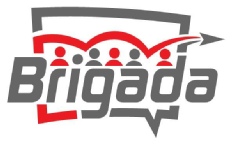 When we tried the switch (to HTML formatted email), the outcry was pronounced. And no wonder. Of the 1,173,109,925 Internet subscribers at the end of 2007, only 349,980,000 were said to connect via broadband. That means that the vast majority of the world is still looking at the Internet through a small pipe (dial-up).
When we tried the switch (to HTML formatted email), the outcry was pronounced. And no wonder. Of the 1,173,109,925 Internet subscribers at the end of 2007, only 349,980,000 were said to connect via broadband. That means that the vast majority of the world is still looking at the Internet through a small pipe (dial-up).
Sources:
http://en.wikipedia.org/wiki/List_of_countries_by_broadband_users
and
http://en.wikipedia.org/wiki/List_of_countries_by_number_of_Internet_users
(this last source will wrap; please reassemble it in your browser’s “To:” box.)
What’s more, many of these dial-up users have HTML disabled by default, which means — when they receive emails laced with http: links within them, the http: links complicate and confuse normal text like nobody’s business. Beyond that, many of the world’s broadband users have “download pictures in email” turned off by default, as well. (They’ve been taught to do so because of virus- and trojan-laced emails.)
What’s more, in an in-depth survey by Jupiter Research in 2006, some 1166 users asserted that they were more likely to open and read/respond to an email if it contained a) products or features that were interesting to them (54%), or b) written copy that attracted them (40%), or a subject line that caught their eye (35%) or a compelling offer (33%). Less than one-fourth even paid any attention to pictures.
(The source for these stats was:
http://www.emaillabs.com/tools/email-marketing-statistics.html )
But what about using hot links to skip down to the individual items from the table of contents in the top-line summary? Wouldn’t that save time for all readers? Well if they have HTML functionality turned on, yes – probably. (I for one don’t; by default, I look at mail in ASCII text mode.) But why wouldn’t those users be able to click over to the web, then, and just use the corresponding web version to leap from link to link to their heart’s content? In this way, if they’ve decided to look at text-only email, they’ll like Brigada. Otherwise, they can always click to the web version for pictures, links, special features and lots more.
So our conclusion, after lots of consideration, was to preserve Brigada’s original ascii formatting by email, but continue to focus on sprucing it up some for those who are able to use the web. That’s all we have to say about that.












A great job and I appreciate the return to plain text. Thanks.
Thanks for detailed explanation. Good conclustion